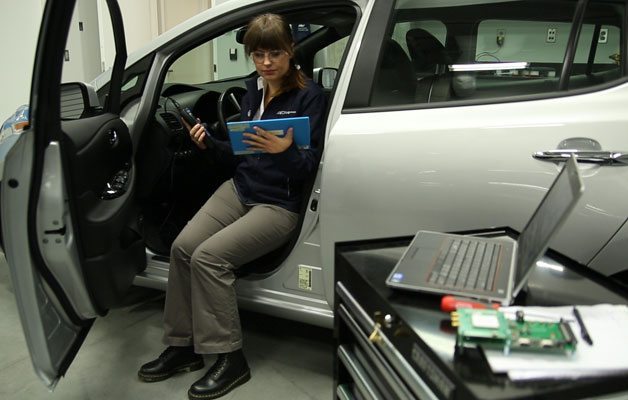Machine-to-machine technology will soon be available around the globe, according to market research firm Berg Insight. The spread of M2M, which allows devices to communicate without human intervention, is being driven – quite literally – by connected cars.
M2M has been a long-term evolutionary trend coming for many years, said Tobias Ryberg, senior analyst at Berg Insight. While in the past there was some activity with General Motor’s OnStar and BMW, connected cars are now reaching the mass production stage.
“There’s a big tipping point, and we’re starting to see connected cars worldwide,” said Ryberg.
Berg Insight predicts that the number of mobile network connections used for wireless M2M communication will increase by 21% reaching 213.9 million globally by the end of 2014. That figure is expected to rise to 599.7 million connections in 2019.
Automotive represents the largest M2M use worldwide. “It’s becoming a standard feature in cars,” Ryberg said, noting that GM now features connectivity in all of its vehicles.
But M2M is not only connected cars. Other big uses include multiple industrial applications including fleet management as well as restaurant billing terminals, smart metering and connected alarm systems. In fact the highest concentration of M2M activity might just be in Scandinavian countries where households are required to have smart meters to monitor utility use and connected alarm systems are very popular.
The hottest regions for M2M are in the developed markets of Western Europe, the U.S. and eastern Asia, but Berg Insight is starting to see a larger volume in emerging markets as well. For instance, credit card payment terminals connected via mobile lines are a big application in Brazil where mobile lines are more common than fixed.
“Overall, the ecosystem is more mature,” Ryberg said. “The big operators all have M2M specialists. It’s really becoming a global thing.”
Telecom companies have a huge role to play in M2M. For a closer look at some carrier programs, check out Orange’s move into connected cars and Telekom Austria’s M2M organization.
One of the biggest obstacles to M2M is mobile network reliability. After all, a poor quality or dropped connection is not very good for a critical business application. The migration to 3G and 4G networks will help with reliability, and Berg Insight expects the share of cellular M2M devices connected to HSPA/LTE networks to more than double from less than 20% at the end of this year to more than 50% by 2018.
While LTE has the advantage of being data oriented, it does have some drawbacks for M2M including expense, power consumption and the module size. Ryberg called LTE both a “blessing and a curse for M2M.”
However, the analyst emphasized that the most important thing for M2M growth as it moves into the global mass market is the need for cooperation within the telecom industry, since even multinational operators like Vodafone don’t have networks in every country.
“There’s a need for cooperation on a global scale,” Ryberg said.

